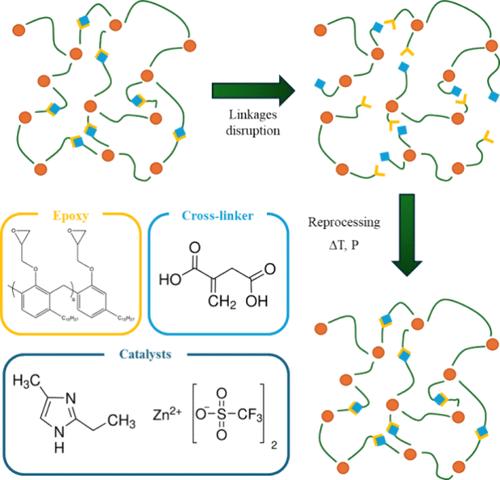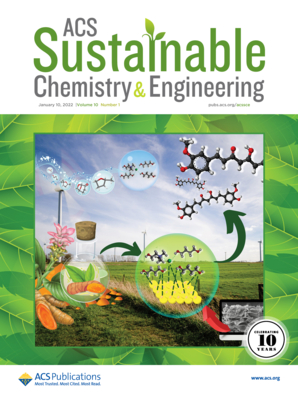Biobased and Reprocessable Vitrimers Based on Cardanol-Derived Epoxy for More Sustainable Thermosets
IF 7.1
1区 化学
Q1 CHEMISTRY, MULTIDISCIPLINARY
引用次数: 0
Abstract
Vitrimers, permanently cross-linked polymers with dynamic covalent bonds that allow the network to change its topology, represent an intriguing field of research as they open new ways of recycling cross-linked polymers that are usually not recyclable. The aim of this work is to prepare an innovative biobased vitrimer starting from the reaction between epoxy and acidic groups. The formulations are thermally cross-linked and then reprocessed by a transesterification reaction. The chemicals used are Cardolite NC-547, a biobased epoxy monomer synthesized from cardanol oil, and itaconic acid. Two catalysts are used: 2-ethyl-4-methylimidazole and zinc triflate. The first one mainly takes part in the cross-linking reaction, while the second one plays a role in both cross-linking and transesterification reactions. A conversion of 86% and a gel content of 82–84% are obtained when both catalysts are used. The thermal reprocessability of the cross-linked polymers is verified by mechanical tests, and the properties of the reprocessed vitrimers are compared with those of the virgin materials. Results show that a good reprocessability is obtained, with no significant change in conversion and gel content values, when a proper amount of zinc triflate is used. A slight increase in cross-linking density values and mechanical properties is observed after reprocessing. A preliminary life cycle assessment (LCA) is performed with the aim of guiding research with relevant environmental information. LCA results suggest that biobased vitrimers could lead to the production of more sustainable products compared to fossil-based ones.

求助全文
约1分钟内获得全文
求助全文
来源期刊

ACS Sustainable Chemistry & Engineering
CHEMISTRY, MULTIDISCIPLINARY-ENGINEERING, CHEMICAL
CiteScore
13.80
自引率
4.80%
发文量
1470
审稿时长
1.7 months
期刊介绍:
ACS Sustainable Chemistry & Engineering is a prestigious weekly peer-reviewed scientific journal published by the American Chemical Society. Dedicated to advancing the principles of green chemistry and green engineering, it covers a wide array of research topics including green chemistry, green engineering, biomass, alternative energy, and life cycle assessment.
The journal welcomes submissions in various formats, including Letters, Articles, Features, and Perspectives (Reviews), that address the challenges of sustainability in the chemical enterprise and contribute to the advancement of sustainable practices. Join us in shaping the future of sustainable chemistry and engineering.
 求助内容:
求助内容: 应助结果提醒方式:
应助结果提醒方式:


